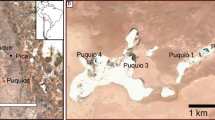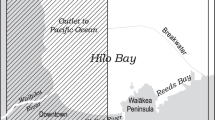Abstract
The specific conductance of surface delivery waters to the Shark River Slough (Everglades National Park, Florida) has increased significantly since the completion of Levee 29 (L-29) and the S-12 water delivery system in the early 1960's. In order to document the response of specific conductance in the slough to changing environmental conditions, it was monitored continuously for a period of 12 mo at a location in central Shark approximately 17 km south of the water delivery site. In addition, variability in isoconductivity patterns throughout the slough was assessed by conducting biweekly surveys at 97 locations.
Specific conductance was found to respond to a variety of natural and manmade environmental changes and proved to be an important management tool serving as an early indicator of potentially broad changes in water quality.
Factors important in determining overall isoconductivity patterns in Shark Slough include:
-
(1)
the ionic composition of surface delivered to Shark Slough via the S-12 delivery structures.
-
(2)
the quantitative relationship between the amount of surface water delivered to the slough and the amount of precipitation falling directly upon the slough.
-
(3)
the effects of evapotranspiration and concentration of biological organisms during seasonal periods of extreme drawdown.
Similar content being viewed by others
References
Flora, M. D. and Rosendahl, P. C.: 1981, ‘Specific Conductance and Ionic Characteristics of the Shark River Slough, Everglades National Park, Florida’, South Florida Research Center Technical Report T-615, National Park Service, Everglades National Park, Homestead, Florida, 55 pp.
Irwin, G. A. and Kirkland, R. T.: 1980, ‘Chemical and Physical Characteristics of Precipitation at Selected Sites in Florida’, U.S. Geological Survey Water Resource Investigations 80–81, Tallahassee, Florida, 70 pp.
Lew, R. M., Flora, M. D., and Rosendahl, P. C.: 1981, ‘An analysis of rainfall input into the Shark River Slough, Everglades National Park, Florida’, South Florida Research Center Technical Report, National Park Service, Everglades National Park, Homestead, Florida.
Rosendahl, P. C. and Rose, P. W.: 1979, Environmental Management 3, 483.
South Florida Water Management District: 1979, ‘Preliminary Report on the Severe Storm of April 24–25, 1979’, 37 pp.
United States Geological Survey: 1980, ‘Water Resources Data for Florida, 1979’, Volume 2A. South Florida Surface Water, 688 pp.
U.S. Senate: 1970, ‘River Basin Monetary Authorizations and Miscellaneous Civil Works Amendments’, 91st Congress, Second Session, Senate Report No. 91-845; 25 pp.
Author information
Authors and Affiliations
Rights and permissions
About this article
Cite this article
Flora, M.D., Rosendahl, P.C. The response of specific conductance to environmental conditions in the everglades National Park, Florida. Water Air Soil Pollut 17, 51–59 (1982). https://doi.org/10.1007/BF00164091
Received:
Revised:
Issue Date:
DOI: https://doi.org/10.1007/BF00164091




